There’s been a lot of talk this summer about how certain disappointing movies—namely Indiana Jones and the Kingdom of the Crystal Skull and Star Wars: The Clone Wars—have tainted fans’ enjoyment of the original films. I’ve heard people coming out of Crystal Skull saying things like, “Thanks, Spielberg, for ruining my childhood.” And I’ve heard even more extreme reactions concerning Clone Wars, with people threatening to throw away their collectibles because the entire series has been “ruined” by this final nail in the Force’s coffin.
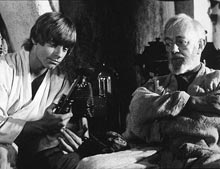
Now, I’m not about to defend either Crystal Skull, or Clone Wars. The former is a pure case of “you can’t go home again” compounded with a dose of deliberate indulgence of a fanbase. It’s not a dreadful movie in itself—though it’s a very silly one—but it can’t escape the sense of “old folks playing dress-up one more time” at the urging of fans desperate for a glimpse of that which once seemed magical to them. The latter is a dreadful movie in itself—and one that’s made just that much worse by a sense of being “had” by a filmmaker turned merchandiser.
In both cases, the ire is understandable, but in both cases this falling off in quality was inevitable. More than that, however, the original audiences that made the original films that spawned these series—or franchises as they’ve come to be called—are no longer the same kids they were when they first encountered the originals. And that’s something that would rob the new entries of some degree of their magic by itself. That air of wonderment that clings to the originals through the power of nostalgia—not just for the movies, but for one’s own childhood or youth—cannot be duplicated. Even if Crystal Skull and Clone Wars had been absolutely wonderful, that particular quality could not have been recaptured in the same way that dipping back into the earlier films would have done.
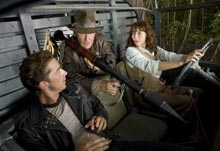
The fact is that seeing something you loved when you were 10 years old—however your older self perceives it—benefits from reminding you of how you felt when you first saw it. Yes, the movies have changed (and I don’t mean because Lucas and Spielberg keep digitally fiddling with their originals), because you have changed. But at the same time, they have the ability to recall that original feeling. A new movie automatically lacks that edge.
All the same, a lot of this simply comes down to the old law of diminishing returns. Series movies are nothing new. One way and another, they’ve been around about as long as the movies. They simply weren’t called franchises—a vaguely post-modern term that seems to equate a movie series (and its ancillary products) with Kentucky Fried Chicken or McDonald’s—and more often than not they came about wholly by accident. In other words, James Whale’s Frankenstein (1931) wasn’t meant to spawn another six or seven movies. When W.S. Van Dyke made the film version of Dashiell Hammett’s The Thin Man in 1934, no one dreamed it would result in 13 years of sequels. And when Bing, Bob and Dotty set off on the Road to Singapore in 1940, who would have imagined that they’d subsequently head to Zanzibar, Morocco, Utopia, Rio, Bali and Hong Kong?

One factor has remained pretty constant throughout the years is that longevity doesn’t equal quality. Try as I may, I cannot come up with a single series that improved over the years of its making. Very often the second film will be better than the first. Few would argue that Bride of Frankenstein (1935) isn’t a better movie than Frankenstein, nor that Road to Zanzibar (1941) isn’t superior to Road to Singapore. There are exceptions, yes. (No subsequent entry has lived up the the original 1984 A Nightmare on Elm Street, for example.) But even in modern film, there’s a general line of thought that The Empire Strikes Back (1980) is better than Star Wars (1977). The same goes for X2 (2003) over The X-Men (2000) and Spider-Man 2 (2004) over Spider-Man (2002). The Indiana Jones movies don’t hold this trend, since most fans seem to prefer the first or third film to the second one. (My money’s on the character of Short Round as the reason behind this.)
In a second film, the whole thing is still fresh, but there’s generally less clunky exposition, a greater sense of where the thing is going, and generally a level of sophistication missing in the first film. What hasn’t happened yet is the sense of repetition that generally leads to ennui and ultimately to outright rot—and the debasing of the series or franchise.
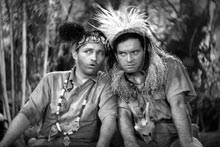
Compartively speaking, I’d equate the Indiana Jones movies with the Road pictures and Star Wars with the Frankenstein ones. The Indy pictures proceed in a forward time-line with new adventures that revolve around the same central character (in some cases, characters) over a period of years. In comedic terms, that’s the basic approach of the Road pictures. The character names change, but that’s a small point, since they’re essentially personality vehicles built around Bing, Bob and Dotty and it really doesn’t matter what names they go by.
Star Wars is more in the Frankenstein mode in that it’s a continuing story. Strip Lucas’s creation of its cockeyed time-line and the approach is much the same—the same basic characters acting out the same basic story that’s ultimately supposed to fit together into a unified tale. Lucas cleverly sidestepped the aging factor of his stars by taking the backtracking prequel approach. One wonders how much of this was present in his original concept, since it laid something of the groundwork by starting the first film as if it was a chapter in an ongoing serial film.

Looking at things from an historical perspective has certain pitfalls, of course. Up till Clone Wars this year—and overlooking the various Star Wars offshoots—neither series suffered from the one thing that invariably plagued earlier series films: the incredible shrinking budget. After the first three Frankenstein movies, there’s a noticable cheapening of that series into the realm of stock footage and 60 minute assembly-line B picture values. The Road pictures were never more than modest A pictures, but the final entry, The Road to Hong Kong (1962) looked like the budget ran into the tens of dollars. That sort of corner-cutting never plagued either or these modern series.
The central Road picture problem, however, afflicts Indiana Jones—the passage of time. While it was an agreeable surprise to find that one of the few things that did work about Crystal Skull was the aging Harrison Ford. He definitely survived the journey from Raiders in 1981 to 2008 in Crystal Skull better than Bing and Bob did from 1940 to 1962. In a particularly sexist—though not entirely unsupportable—move their last adventure decided that Dorothy Lamour was too old to play their romantic interest and Joan Collins (yes, Joan Collins) was brought in, while poor Dotty was reduced to a guest star (“our special cup of tea”). In all honesty, something similar might have helped Crystal Skull—not because Karen Allen hasn’t aged as well as Ford, but simply because their remarkable lack of chemistry hasn’t improved in the intervening 27 years.
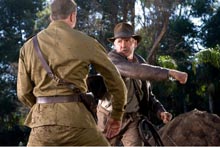
The major thing that runs both Crystal Skull and Hong Kong aground is simply the sense of “been there, done that,” and, worse “done that better.” There’s no freshness, only a sense of gears turning while your old friends go through their paces. Nevermind that you wanted them to, it becomes an indulgence for the audience—one that you walk away from thinking, “Gee, they did that better 20 years ago.” Well, yes, they did, but 20 years ago you were probably more open to it, too.
Another strange parallel lies in the fact that both films fall prey to the trap of replacing genuine creativity with special effects work and a preposterous grafting on of bargain basement sci-fi. Sure, the effects in Road to Hong Kong are low-rent cheese (even by 1962 standards), but the real problem is they result in gags that aren’t very funny. The effects in Crystal Skull are better achieved—crummy CGI monkeys to one side—but they result in thrills that aren’t very thrilling. That really shouldn’t surprise anyone, since the George Lucas has spent 30 years living in the belief that any and everything can be improved by throwing technology at it. This, after all, is the guy who bragged in 1983 about how many more effects Return of the Jedi had than Star Wars—as if that automatically made it better.

And that brings us back to Clone Wars—as indefensible a piece of marketing over art (however defined) as ever came down the pike. With its ill-chosen theatrical release, Lucas—who took one look at the finished product and decided it was “too good” for TV—finally succumbed to the cheapening that brought down the Frankenstein movies. It is to The Empire Strikes Back what House of Dracula (1945) was to Bride of Frankenstein—only it’s not as good as House of Dracula.
The Frankenstein series had a terrific advantage of Star Wars simply by virtue of when the films were made. No, I’m not talking any of that “golden age” nonsense (by the end of the series, that age was long past anyway). I’m merely talking about the useful era of here-today-gone-tomorrow. Movies then were not for the most part still hanging around for purposes of comparison after their original runs. There were no VCRs or DVD players. You couldn’t nip ‘round to the video store and check out the internal coherence of the connecting storylines—and there certainly wasn’t the same kind of cult (at least originally) built around the movies and their minutiae.
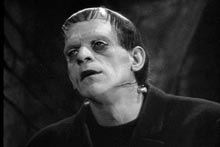
It was just as well. From the onset, the series wasn’t exactly scrupulous in the area of internal logic. In the original film, for example, a big fuss is made over the fact that the Monster had been given a criminal brain. OK, but this was an aspect that was left hanging around from Robert Florey’s early script. It was still there after Florey was canned and James Whale came on board, but nothing comes of it. The Monster becomes more misunderstood than actually evil—and that’s exacerbated to a spectacular degree in Bride of Frankenstein four years later where the criminal brain is forgotten. Who was going to check—and how?
It gets worse. The Monster only becomes “immortal” in the third movie, Son of Frankenstein (1939), in which he’s also forgotten that he learned how to talk in the second movie. Three years later in Ghost of Frankenstein, he’s forgotten how to make any sound at all and has turned into Lon Chaney, Jr. in the bargain. Then the whole criminal brain business gets brought back into play and he ends up with a new brain—one belonging to his grave-robbing buddy, Ygor (Bela Lugosi). This gives him back the power of speech (Lugosi overdubbing Chaney’s voice), but leaves him blind because the blood types don’t mix. And while this was originally remembered in Frankenstein Meets the Wolfman (1943) as it was written, it was all cut prior to release, making Lugosi’s portrayal of the Monster as blind incomprehensible. By the end of the series, there was no logic left, and it’s somehow fitting that the old boy burns to death (again) in House of Dracula courtesy of recycled footage of his flambe demise in Ghost of Frankenstein.
Nobody complained much because nodoby remembered the previous entries all that clearly—except perhaps for the inescapable perception that the earlier films were better. Imagine the furor that would result over this kind of slapdashery had Lucas applied it to his movies. Better still, don’t imagine it because it wouldn’t be pretty.
Lucas avoids the continuity issue by going backwards and leading up to the original Star Wars, which conceptually was pretty savvy—and was designed to play well with the fanbase and its apparent inability to get enough backstory on the characters and events of the original three movies. However, there were three aspects at work that—along with the sheer burn-out factor—were destined to bring the series to the low ebb of Clone Wars. These are simple—Lucas’s love affair with technology for its own sake, his inability to write dialogue and his compulsive merchandising.

These things were always there. They simply became harder to overlook as the series progressed. From the very onset, Carrie Fisher (of the famous quote to Lucas, “You can type this stuff, but you can’t say it”) and Harrison Ford complained about Lucas’ dialogue and remonkeyed some of their lines. It’s not surprising that the best script in the series—the one for The Empire Strikes Back—was written by Leigh Brackett and Lawrence Kasdan, not Lucas. For that matter, Kasdan co-wrote Return of the Jedi. It wasn’t until The Phantom Menace that the screenplays—and the directing chores—reverted to being all Lucas—and it wasn’t a good thing.
Lucas’ ongoing romance with technology was certainly evidenced—as already noted—by his pride in the increasing number of effects in the second and third movies. Left to his own devices, did anyone really think this was going to get better with the prequels?
But then there’s the whole merchandising side of things—and while that was originally more of a side issue (you may recall that Kenner toys badly underestimated the amount of product that the original Star Wars would sell), it quickly became something else. In the rush to damn the prequels for their unabashed hucksterism tie-ins (Ewan McGregor potato chips?), everyone seems to have forgotten the righteous indignation over the Ewoks in 1983—and the widely held perception that they were created specifically as a really marketable toy. This is nothing new. How many books has Lucas signed off on and authorized? Video games? Lego sets? Bedsheets? Window curtains? Spin-offs? You name it. If it can be marketed, it’s there. If any series of movies deserves the term “franchise,” it’s Star Wars. It is a merchandising empire all its own. And if it hasn’t quite always been, it’s always been moving in that direction.
And the truth is that there’s nothing inherently wrong with any of this. It’s part and parcel of the business. And I can assure you that had there been such a thing as a Frankenstein sheet set when I was a kid, I’d have badgered my mother until I was sleeping on the damned things. (Hell, I’d probably buy them myself now if Universal decided to bring them out.) These things are fun—or they should be fun. The problem comes when they merchandising starts guiding the direction of the movies themselves—and there we have the Ewoks again.
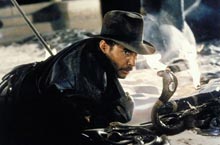
What has happened with the prequels and Clone Wars is that the combination of Lucas’ arrogance and the increasingly shameless huckstering simply reached critical mass. The aggregation of years of slights erupted into a backlash when they became impossible to overlook. What once seemed cool now looks more than a little tawdry. The question is whether it will remain so—or is today’s Clone Wars tomorrow’s Ewoks? Will time remove the bad taste and restore the pleasant memories? Who knows? Hey, from this vantage point, I can appreciate the good things in Road to Hong Kong and the cheese-paring economies of House of Dracula.
I’ve no personal stake in either Star Wars, or Indiana Jones. They’re not part of my childhood, and it never even briefly occurred to me that they were great cinema. However, I do think that maybe the fans might want to take a step back from this summer’s disappointments—or betrayals, if you like—and ask themselves if one so-so movie and one plain lousy one are really capable of “ruining” their childhoods. (It wouldn’t hurt to ponder the question of how much of a part you played in bringing these very things about, but that’s another issue.) I’m not sure that bitterness at Lucas and Spielberg offers much in the way of comfort as a trade-off.



Before you comment
The comments section is here to provide a platform for civil dialogue on the issues we face together as a local community. Xpress is committed to offering this platform for all voices, but when the tone of the discussion gets nasty or strays off topic, we believe many people choose not to participate. Xpress editors are determined to moderate comments to ensure a constructive interchange is maintained. All comments judged not to be in keeping with the spirit of civil discourse will be removed and repeat violators will be banned. See here for our terms of service. Thank you for being part of this effort to promote respectful discussion.